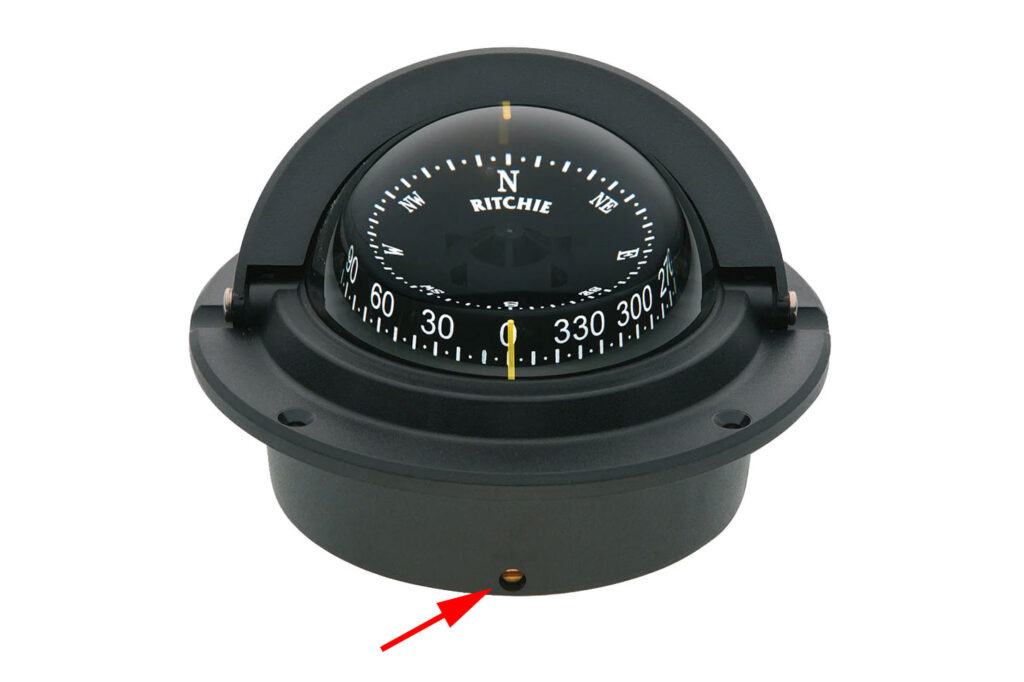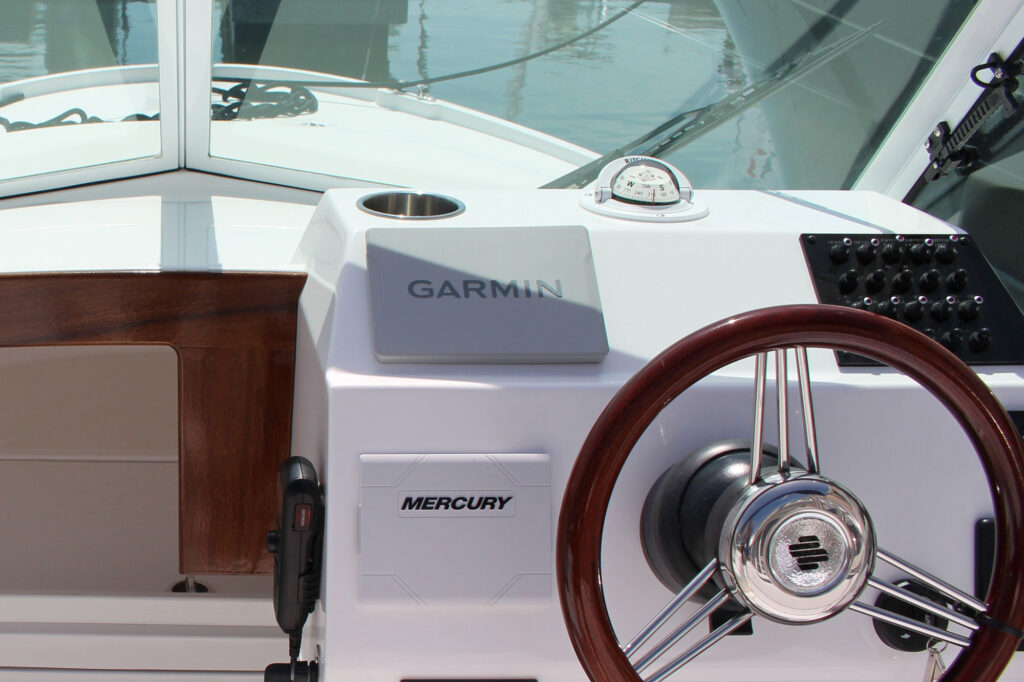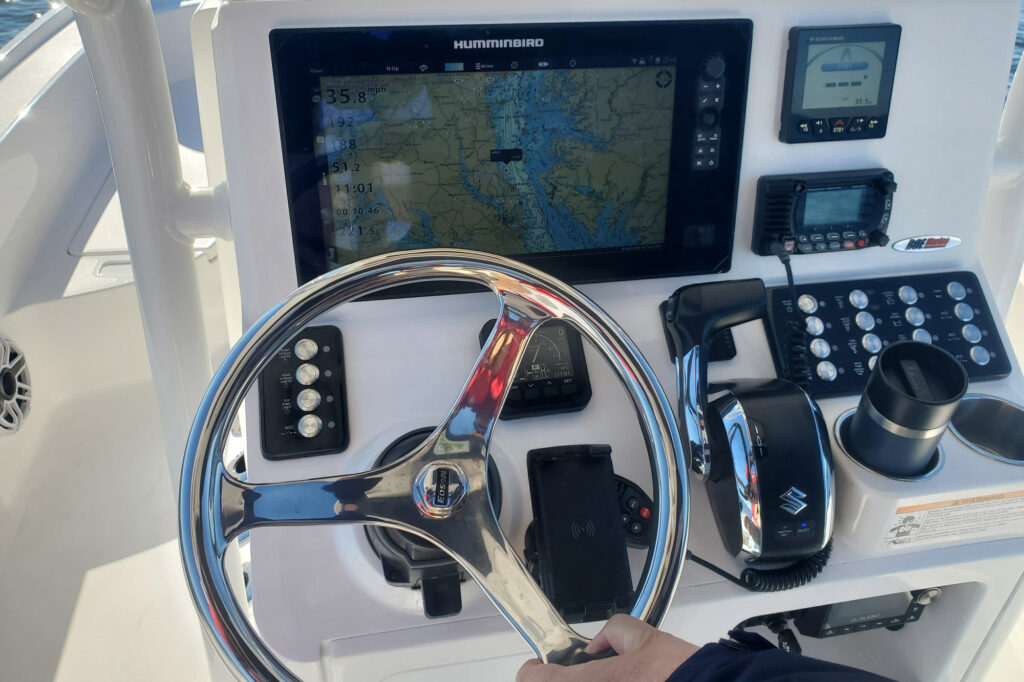How to Swing a Compass on a Boat
 The compensators are usually clearly visible and look more or less like a slotted set-screw.
Courtesy Lenny Rudow
The compensators are usually clearly visible and look more or less like a slotted set-screw.
Courtesy Lenny Rudow
Do you know how to swing a compass on a boat? Most boaters don’t, because we’ve become so accustomed to navigating via our chart plotters and GPS that a compass these days almost seems like an afterthought. But much as we modern mariners love our electronic navigational gear, we all know darn well that one day it might not work. Software glitches, electric gremlins and hardware mishaps all happen on boats. And when they happen to your vessel’s electronics, unless you have a lot of familiar landmarks within sight, you’d better know how to use that compass. Just as importantly, you’d better know how to swing a compass on a boat so you know it will give you an accurate reading when you need it most.
What is Swinging a Compass?All compasses are subject to deviation as the result of interference caused by metal items and/or electrical fields generated by accessory equipment and the wires that feed them. This interference can cause a compass’s reading to be off by a few degrees, or in some cases a lot more. So, all compasses are equipped for small adjustments that can compensate for this interference. Adjusting this compensation is called “swinging” the compass.
 When a compass is flush-mounted like this one, you may need to look underneath the helm to find the compensators.
Courtesy Lenny Rudow
How to Swing a Compass
When a compass is flush-mounted like this one, you may need to look underneath the helm to find the compensators.
Courtesy Lenny Rudow
How to Swing a Compass
Swinging the compass requires a bit of very simple preparation. First, you’ll first need to choose an area where you have visible landmarks like fixed markers, lighthouses or points to steer for on headings within 10 degrees of north/south and east/west. You also need to be in an area with relatively calm waters without too much current, so your boat’s course over ground is as close as possible to the boat’s actual heading. Then, you’ll need to figure out how your specific compass is adjusted. Most of the time there will be two visible compensators that look like set-screws or visible rods with slotted screw heads, one on the front of the compass and another on the side. If it’s not obvious, refer to your owner’s manual. (If you don’t have the manual handy, a quick Google search can usually provide the answer). You’ll also need a non-magnetic screwdriver or key to turn the screws.
Once underway, take a north-south course, observe your GPS course, and compare it to your compass heading. Note: Always remember to make sure your GPS is set to magnetic north, not true north, because your compass always reads to magnetic headings. If you’re unsure how to do so, refer to your GPS’s owner’s manual.
 Be sure your GPS is set to display magnetic north, not true, before beginning.
Courtesy Lenny Rudow
Be sure your GPS is set to display magnetic north, not true, before beginning.
Courtesy Lenny Rudow
If the GPS and compass don’t match up, turn the compensator on the side of the compass (generally called the port/starboard compensator) until the compass and the GPS agree. Then turn your boat to an east-west course. Again, match up the GPS to the compass, and if they disagree, this time turn the compensator on the front of the compass (generally called the fore/aft compensator) until the courses match up.
When you’ve performed both port/starboard and fore/aft compensations, turn the boat around and run reciprocal courses to double-check the heading accuracy.
Additional Things to Know to Swing a CompassIf you don’t have GPS, you can still swing the compass using a quality hand-bearing compass held far from any metals or accessories. You can also refer to paper charts with recorded course lines between north/south and east/west landmarks, although this will likely result in a less-accurate adjustment.
Keep in mind that what we’ve covered so far is for swinging a boat compass that has already been installed in a boat. If you’re installing a new one from scratch, you may need to rotate the compass itself, in its mounting position, before affixing it in place to get readings that are close to accurate before following this process. In this case, it’s wise to carefully select the mounting location to keep the compass as far as possible from large metal items or electrical accessories. Also remember that some electrical accessories can affect the compass intermittently, depending on when they’re in use. Windshield wiper motors, for example, are notorious for unexpectedly throwing boat compasses out of kilter.
 Visible landmarks like fixed markers or points will help you maintain a proper course when swinging a compass.
Courtesy Lenny Rudow
Visible landmarks like fixed markers or points will help you maintain a proper course when swinging a compass.
Courtesy Lenny Rudow
Finally, note that compass compensators have their limits. It may differ by brand, but a 20-degree limit is common and if your compass is off by more than that, it will need to be partially rotated or mounted in a different spot.
In this age of GPS and electronic navigation, swinging a boat compass may seem quaint. But remember, when those electronics fail you, you’ll need that compass to get back to port. And an error of five degrees might not sound like too much, but if you run for 10 miles you’ll be close to a mile off from your destination. So be prepared for those software glitches, electrical gremlins and hardware mishaps, and swing your boat’s compass before you cast off the lines on your next big adventure.
The post How to Swing a Compass on a Boat appeared first on Yachting.
- Home
- About Us
- Write For Us / Submit Content
- Advertising And Affiliates
- Feeds And Syndication
- Contact Us
- Login
- Privacy
All Rights Reserved. Copyright , Central Coast Communications, Inc.